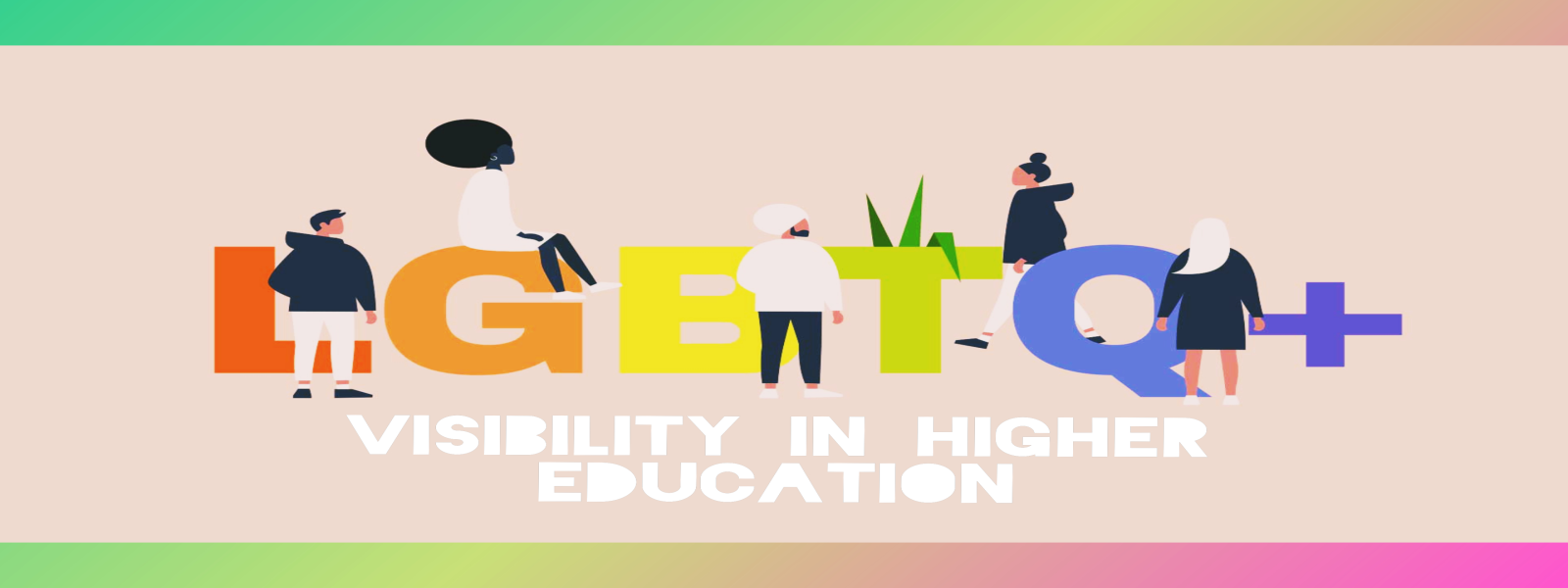LGBTQI+ Representation in Higher Education
In our latest research reflection, Damon Young – one of the School of Education’s doctoral students – discusses his experience of growing-up knowingly gay in mainstream education and the need for better representation on courses, specifically in Higher Education.
Personal reflections
When I was 14, I had a girlfriend, even though I knew I was attracted to men at the age of 7/8 years old. Why? As a cis gay man, I have always been aware of prejudices that (still) exist in UK society. Whilst there have been many advances for gender and sexual orientation protections in law in the UK (Equality Act 2010), it still feels that there is a long way to go to not feel like 'the other'.
During my experience of the education system in England – including primary, secondary, 6th form college and university – there was never any LGBTQI+ representation in my course materials. I often told myself I cannot be normal because from books, videos and even homework, I never felt represented. Hiding my sexuality was something I never questioned, and just did.
Reports produced by the UK and LGBT Youth Scotland (Government Equalities Office, 2018; LGBT Youth Scotland, 2017) suggest that life is generally improving for people who identify as lesbian or gay, though there is still a large amount of work to be done.
Scotland became the first country in the world to ensure curricular LGBT representation via the Curriculum for Excellence, after consulting organisations including LGBT Youth Scotland and Stonewall Scotland, who also provide training to schools, if needed (Education Scotland, 2020). The UK Government followed suit, and in a landmark ruling also decided that LGBT representation should be included in the English curriculum (Department for Education, 2019). This is a major step forward for LGBT representation in mainstream education.
Research themes
Through conducting a systematic review (which can be downloaded here), I found that there were three main issues: university campus climates are heteronormative; there is a lack of representation on university campuses; and discrimination against LGBTQI+ people still takes place, whether overtly or covertly. Perhaps what surprised me most was that students aged 18+ were still concealing their sexual orientation and gender identity. My inner 14-year-old self burst with emotions upon reading narrative studies where students express trying to conceal these facets of their identity from people on their courses and those they live with.
From my research, the most commonly reoccurring theme across all studies was a lack of representation on courses. The issue of LGBTQI+ representation in Higher Education has produced some alarming results by many researchers throughout the past ten years, including discrimination, prejudice, and lack of representation. A recent Stonewall report found that 43% of university students and staff in 2018 decided against revealing their sexual orientation or gender identity for fear of being discriminated against both off and on campus (Bachman & Gooch, 2018)
Why does this research matter?
My continued research into the use of course materials and LGBTQI+ representation requires more coverage and time to better understand the decisions made by Higher Education lecturers about how to be inclusive and representative in relation to what is being taught. The aim of research is to investigate what is understood by gender and sexuality within the confines of Higher Education environments, to help further explore course materials that could be used to ensure there is a balance of representation for both students and teachers on university courses.
If you have been affected by anything mentioned in this post, you can contact the University of Strathclyde's Student Support and Wellbeing services. If you would like to get in touch to discuss anything from this post, please get in touch:
Twitter @DamonGlasgow
Email: damon.young@strath.ac.uk
References
Bachmann, C. L., & Gooch, S. B. (2018). LGBT IN BRITAIN: University Report. 1-13.
Department for Education. (2020). Relationships Education, Relationships and Sex Education (RSE) and Health Education.
Education Scotland. (2020). Supporting LGBT young people and those who are part of LGBT families | Learning resources. National Improvement Hub.
Equality Act 2010, c.15. (Accessed 9 October 2020)
Government Equalities (2018). National LGBT Survey: Research report.
LGBT Youth Scotland. (2017). Life in Scotland for LGBT Young People: Safety Report 2015.
Published 14/11/2020
